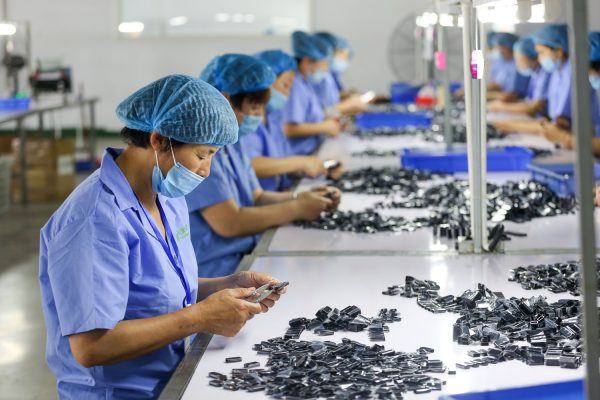Prior to 2016, the world was accustomed to low barriers to trade. Tariffs on manufactured goods — including parts and components or goods-in-process — declined steadily for decades as more countries joined the WTO and more regional trade agreements were signed. The arrival of modern communications technology and the falling costs of air travel enabled companies to cast a wider net when identifying overseas suppliers. This expanded the range of inputs — even relatively specialised ones — that they could reliably source from abroad.
Manufacturing firms took advantage of this business environment and fragmented their production chains across country borders, motivated by forces such as low labour costs and proximity to key markets. China was of course one of the biggest beneficiaries, with its deep integration in global supply chains being a major driver of its export boom.
The US–China tariff war threw a significant spanner in the works. When the initial tariff salvos were fired in 2018, most firms remained optimistic. But fast forward to mid-2019, as the positions of both the United States and China have hardened, and now firms are convinced of the ominous realisation that these tariffs are here to stay. The intent of the current US administration appears to be the ‘decoupling’ of the economies of the United States and China. In other words, global supply chains aren’t just collateral damage in this tariff war. They are instead a prime target, with the current administration seemingly keen to reduce the US dependence on China as a trade and supply chain partner.
Already, 2019 is poised to be a very bad year for US–China trade flows. According to the US Census Bureau, the value of US imports from China has dropped significantly (more than 9 per cent) on a year-on-year basis for every single month so far for which data is available. The largest drop was in March — the value of imports decreased from US$38.3 million to US$31 million, an 18.7 per cent change from 2018. While the ongoing disruption to supply chains between the United States and China is likely to account for a good portion of this decline, a fuller accounting exercise will have to await more in-depth research.
Supply chain professionals are now scrambling. Some are rushing to get their companies’ orders in to try and beat the implementation dates of key tariffs. Others are searching for alternative sources of inputs outside of China, as a first step in a broader re-organisation of their supply chain strategies. These changes are easier in theory than in practice — suppliers outside of China, such as Vietnam, reportedly lack the capacity to accommodate the sudden rise in demand that they now face. Small-business manufacturers and major brand-name firms alike are being affected.
What does this all mean for the future of global supply chains? Some may see the tariff actions of the past two years as mere bumps in the road. Once cooler heads prevail, so will the old state of affairs. But this optimistic view downplays the potential long-term repercussions of the trade war.
Recent developments may hasten the erosion of China’s supply chain competitiveness in labour-intensive industries such as textiles, apparel, footwear and toys. Even before 2016, rising labour costs and concerns about product quality were already affecting China’s attractiveness as a manufacturing location in these industries. The tariff war is only reinforcing these concerns. This in itself may not be the worst development — it presents an opportunity for China to double down on restructuring its economy and shift even more aggressively into higher-end manufacturing activities in electronics, semiconductors or telecommunications equipment.
In the short-run though, Chinese workers caught in this structural transition are likely to experience some pain. The slowdown in China’s exports between 2013–2016 was accompanied by a rise in labour strikes, which quickly drew the attention of Chinese authorities concerned about social stability. With these ongoing tariff wars, economic dislocation and the impact on workers as supply chain orders dry up will have to be cautiously managed by authorities.
For the United States, there is no guarantee that future administrations will revert to a commitment to free trade. The Republican Party now has a significant anti-trade wing that will likely outlast US President Donald Trump’s term. At the same time, the Democratic Party has traditionally viewed openness to international trade with suspicion given their concern for domestic workers and the issue of rising inequality.
In short, Pandora’s Box has been opened. Future US presidents may well be tempted to take unilateral tariff actions to advance domestic objectives following Trump’s lead. Firms will have to anticipate that their global supply chain decisions will face greater scrutiny from politicians and perhaps even public criticism. This uncertainty extends beyond the realm of international trade. Firms seeking to undertake foreign direct investment to secure a greater local foothold for their supply chain activities can expect to face more political hurdles, particularly in industries that are deemed to be technologically sensitive — as the ongoing Huawei saga has demonstrated.
Davin Chor is Associate Professor at the Tuck School of Business, Dartmouth College.

